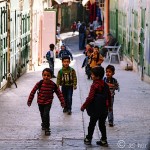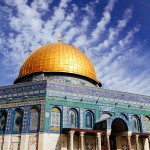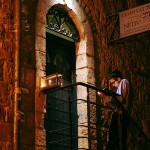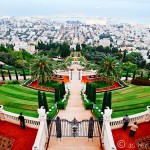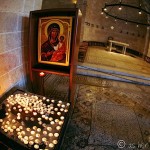Yesterday I wrote about the first part of our day-long tour of Bethlehem and Hebron with Green Olive tours. We visited the city of Hebron, which is divided into two sectors, Palestinian and Israeli, and witnessed how conflict has necessitated an unfortunate barrier between these two groups.
We’ll start today’s recap on a lighter note. On our way to visit the area where Jesus was born in Bethlehem, we pass by this Stars & Bucks Cafe.

A few minutes later we arrive in the heart of Bethlehem, which is part of Palestine.
I’m here in late November, which explains the undecorated Christmas tree in the plaza below.

Here’s the Church of the Nativity where Mary gave birth to Jesus over two thousand years ago. It’s been rebuilt many times and is now listed as an UNESCO World Heritage Site.

The church is administered jointly by Roman Catholic, Greek Orthodox, and Armenian Apostolic authorities.
This is the exterior of the Roman Catholic portion:

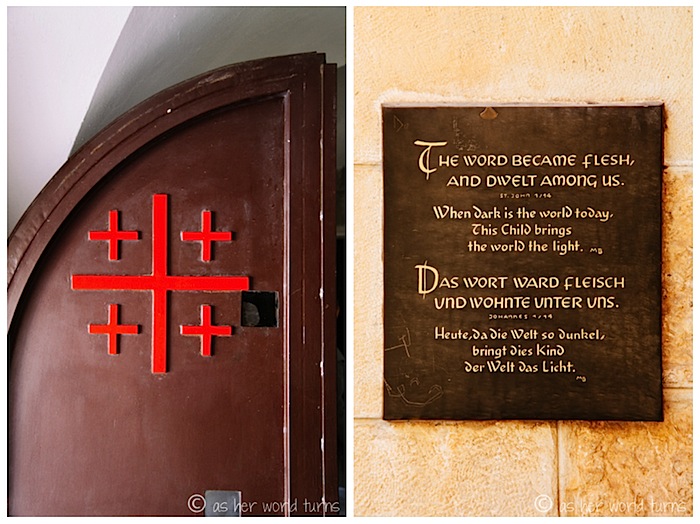
And here’s the inside of the Roman Catholic church, which broadcasts its Christmas Eve service world-wide.
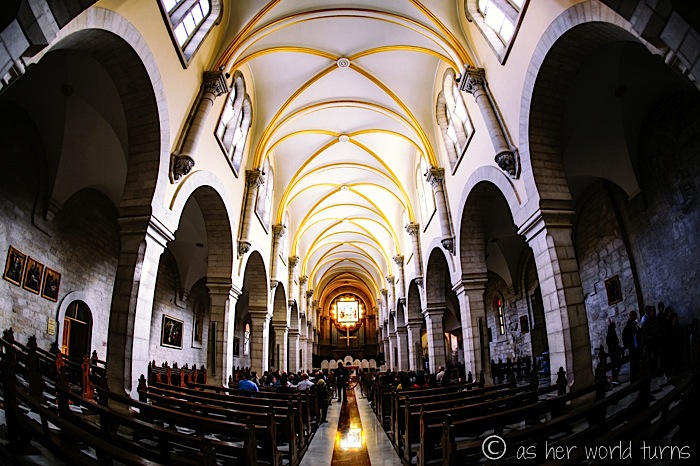
This is the Greek Orthodox area. It’s ornate and lovely to photograph.
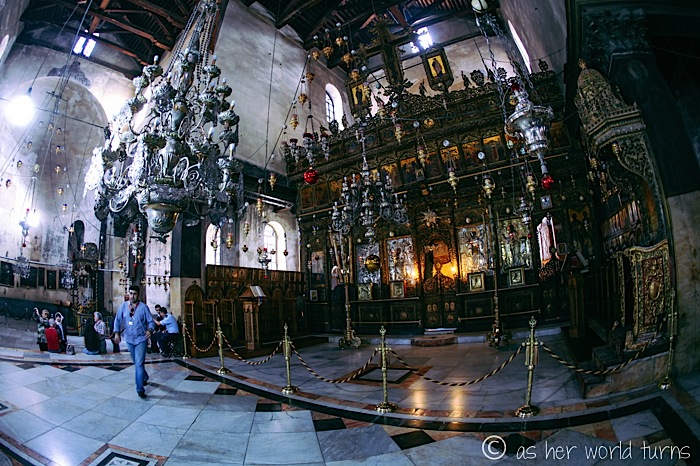


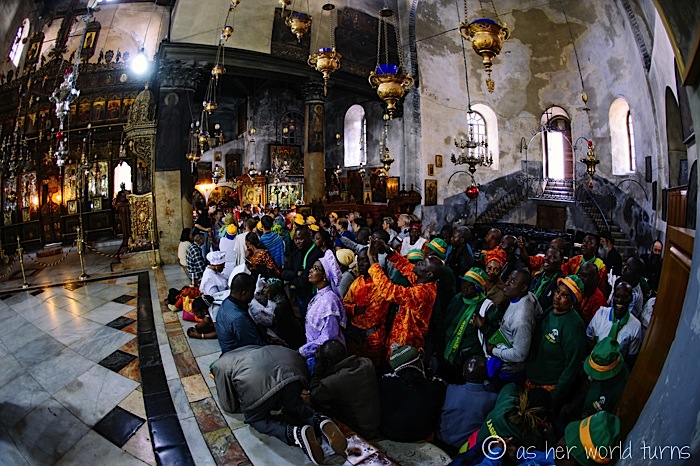
Outside the church, our guide Mohannet explains more about the history of Palestine.

Mohannet points out this Israeli settlement on the hill below. These settlements are Israeli civilian communities built on lands occupied by Israel during the 1967 Six-Day War. There are about 120 of them throughout the West Bank, which are legally recognized by the Israeli government — but the international consensus (including United Nations) is that all West Bank Israeli settlements are illegal under international law because they’re on occupied land.
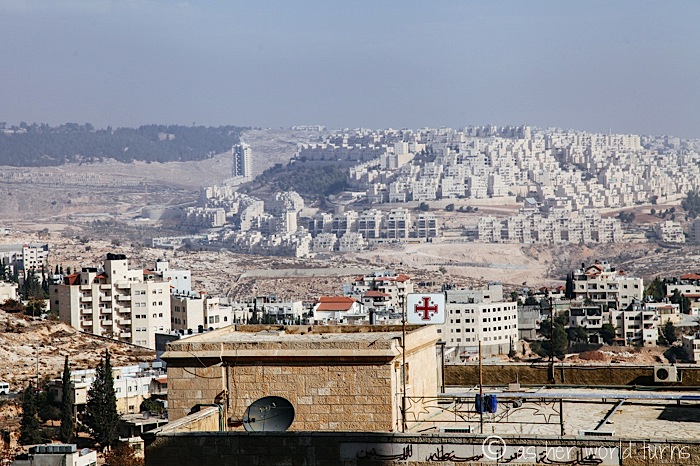
Next up we visit part of the separation wall that runs along the border between Israel and the West Bank.

Israel argues that the wall is necessary to protect Israeli civilians from Palestinian terrorism. Opponents argue that the barrier is an illegal attempt to annex Palestine land under the guise of security.
The wall severely restricts Palestinians, particularly their ability to travel freely within the West Bank and to access water, plus medical and educational services and work in Israel.

We stop at Banksy’s Shop, which sells postcards and small prints of subversive artwork that the famous UK-based graffiti artist made during a 2005 visit to Palestine.
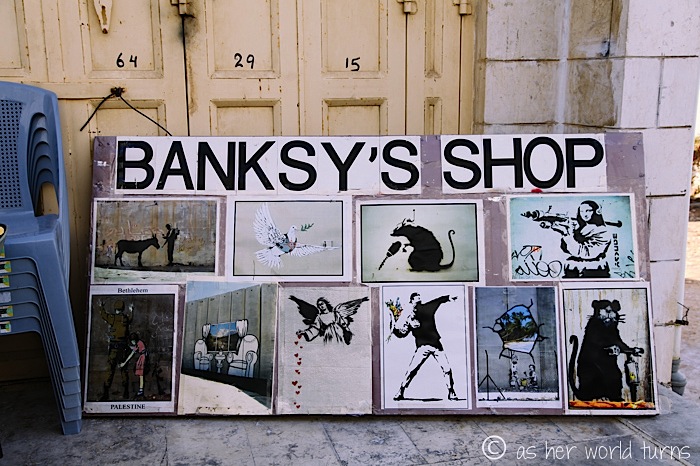
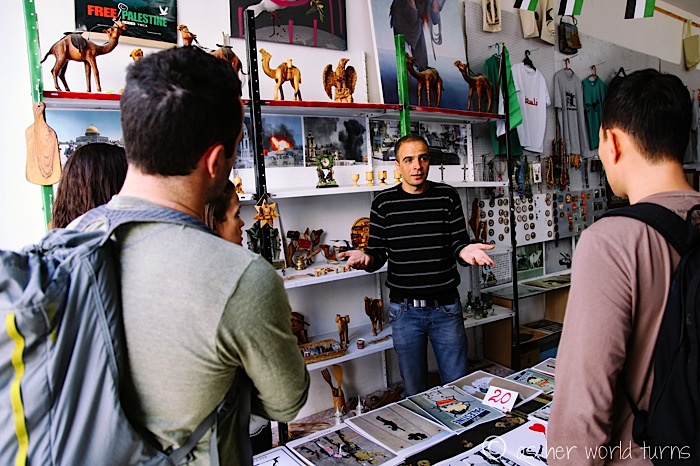
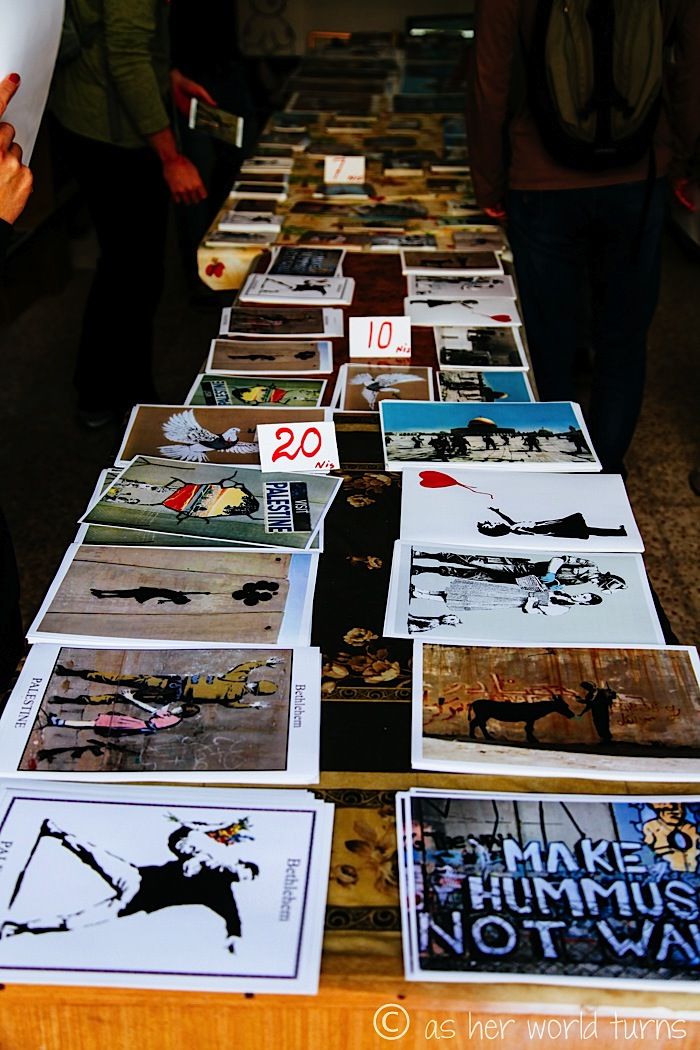
Here are close-ups of Banksy’s work in Palestine:
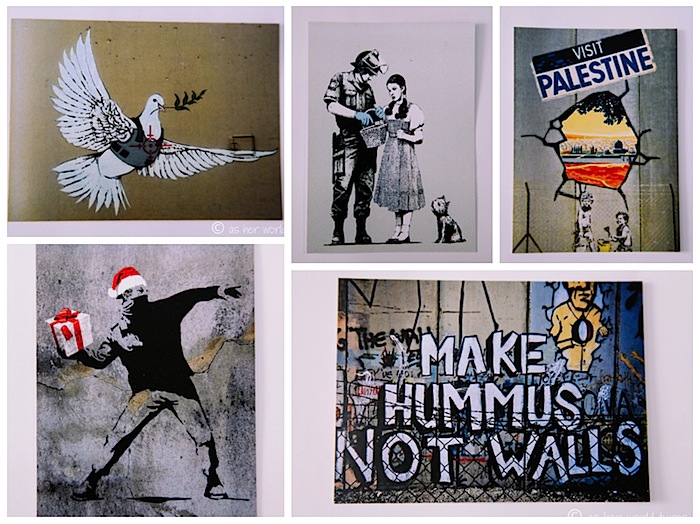
The most iconic of his graffiti art in the West Bank depicts this guard getting frisked by an innocent little girl.
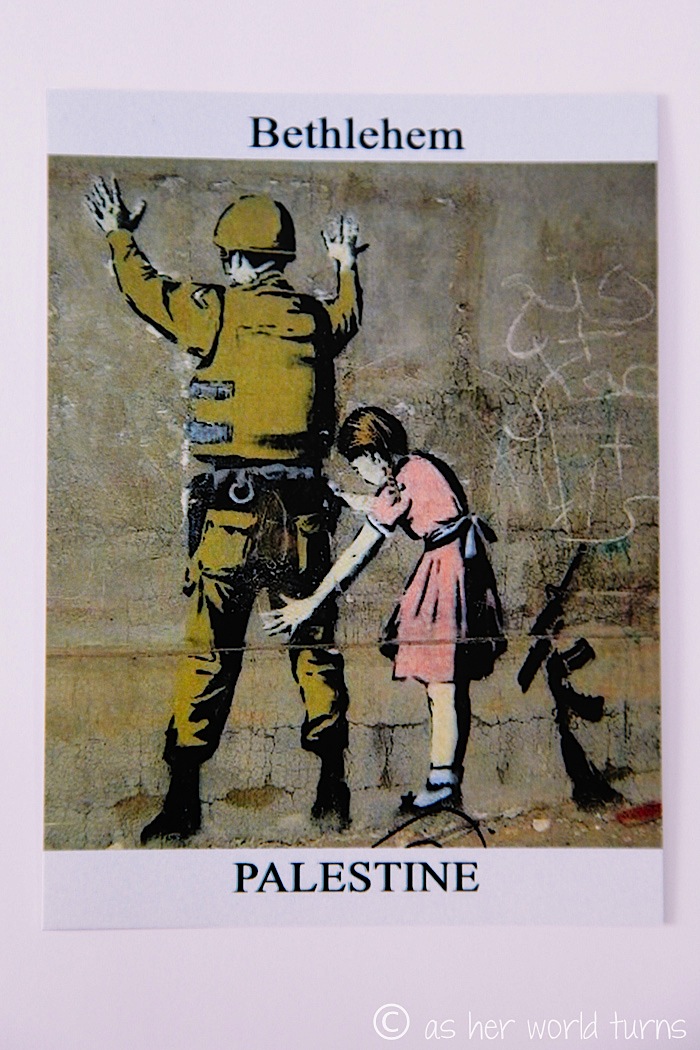
Shortly after we leave the shop, we visit the actual graffiti art, which miraculously has survived this long without being painted over.
Ironically, just as I snap this photo with my iPhone, two guards appear in the distance. I’d taken shots on my DSLR moments earlier but the guards were too far away to be seen at that point. I don’t dare take the DSLR back out again because I figure the guards will be sensitive about photos as they get closer.
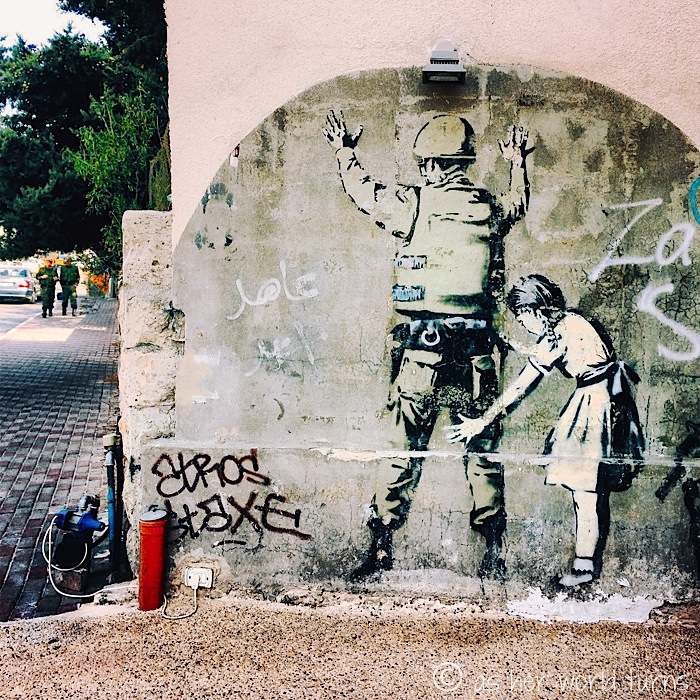
But back to Banksy’s Shop for a moment — the people there are awesome and after giving us tea, we’re allowed to use their spray paint cans to add our own graffiti to the wall. (The wall outside their shop clearly gets repainted often so that new visitors can add their own art.)

I draw the hourglass on the right below… in honor of Days of our Lives. Because once a soap opera dork, always a soap opera dork. High school Erica would be so proud.
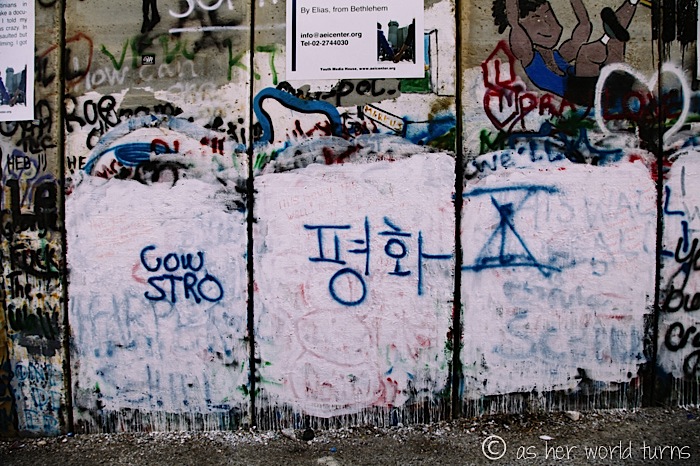
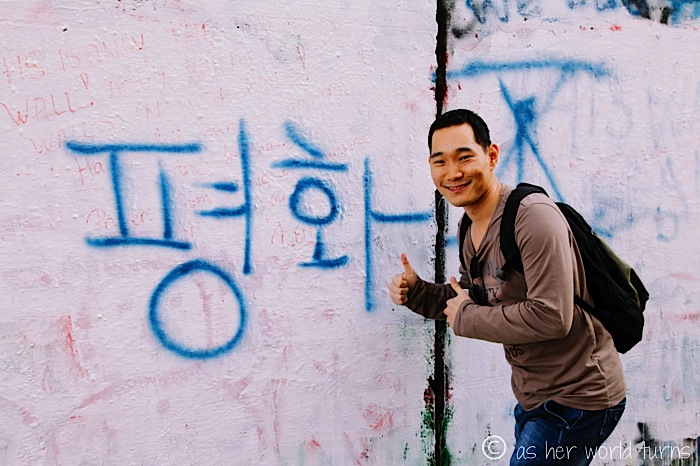
And then someone else on our tour adds an “O” after the “X” in my hourglass and makes a peace sign.

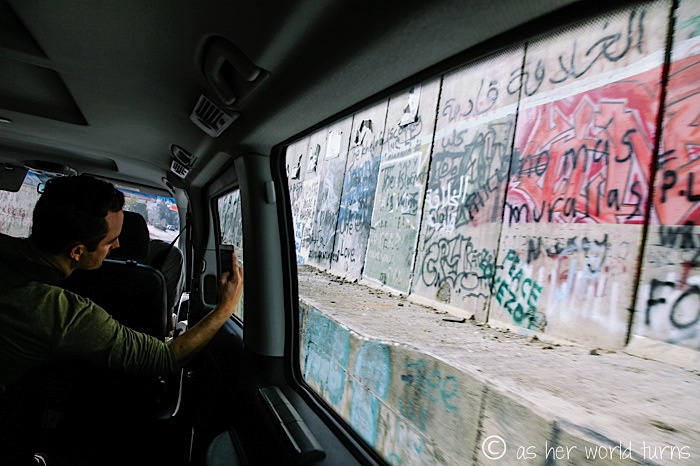

Next up we visit Dheisheh refugee camp. It was established in 1949 as temporary refuge for 3,400 Palestinians who fled during the 1948 Arab-Iraeli War. Six decades later, some of those initial refugees and their descendants still live here. Its population is either 8,700 or 13,000 depending on whether you ask the Palestinian Authority or the UNRWA.
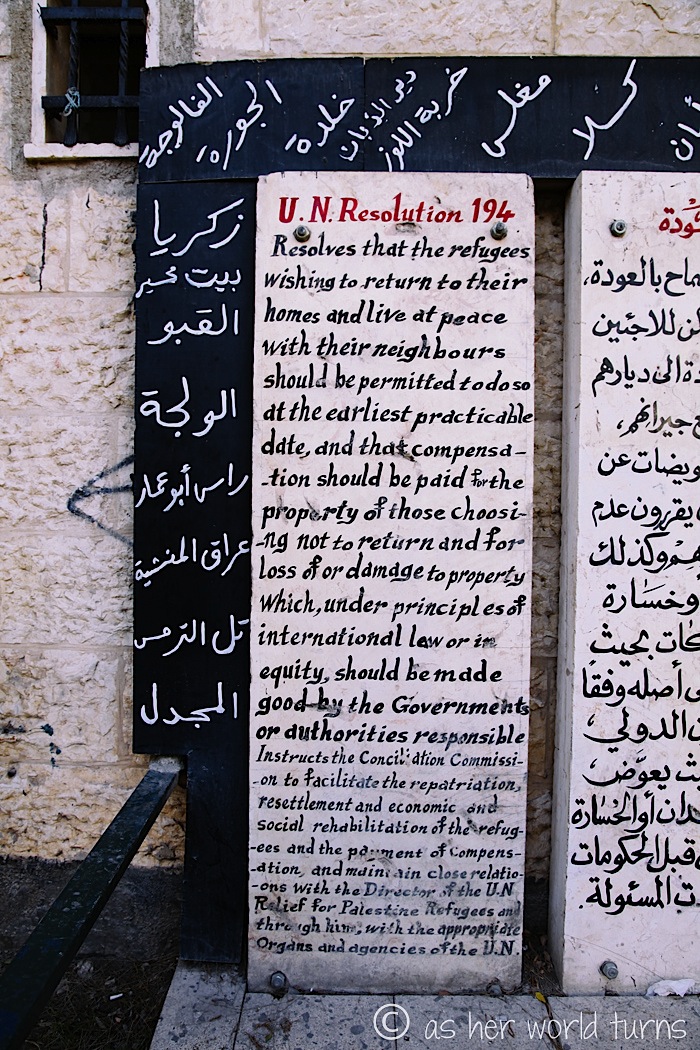
While the original refugees lived in tents, after about 10 years they began to construct small homes — since then they’ve been built on top of each other with very narrow pathways between. The camp is connected to the water and electric systems of Bethlehem, but it’s not connected to the public sewage system — so they use communal percolation pits instead.
Their medical center was donated by Japan.


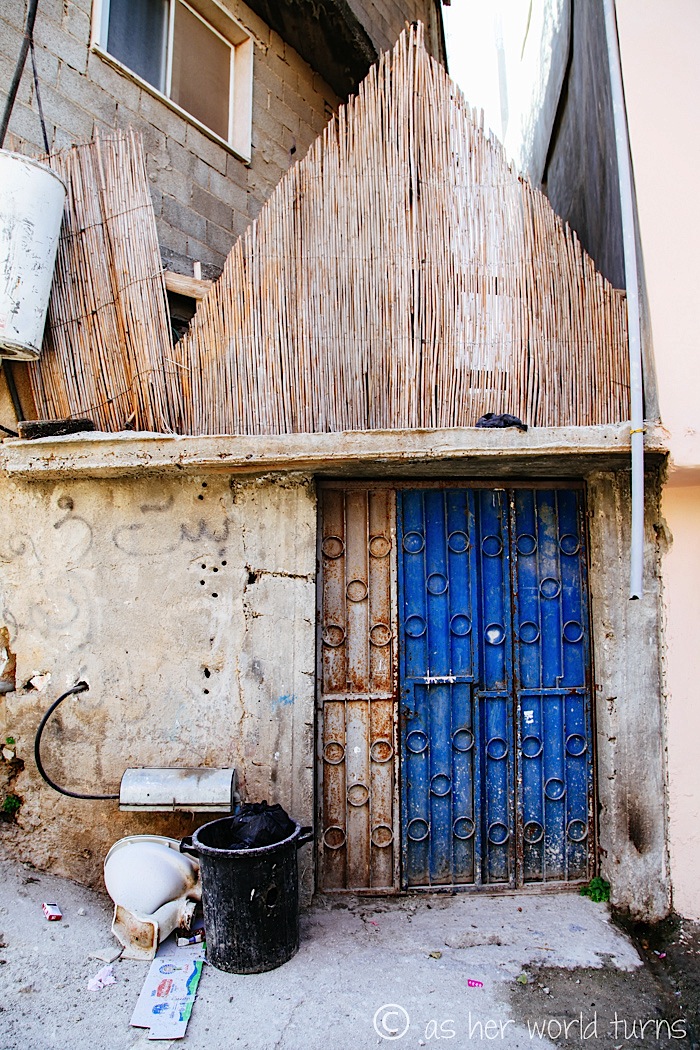
That white canister in the photo below is a water cistern.
Water is an incredibly precious resource in Palestine because their access to it is so limited. Water in these areas is fully controlled by Israel.
Due to unreliable delivery, virtually every Palestinian house has at least one, if not several, cisterns to store water. The average cost of water supply is around $25 per month in the West Bank, and 5 or 6 times higher for those not connected to piped water (they must purchase water tanks instead).

Our guide shows us a water gauge in the refugee camp.
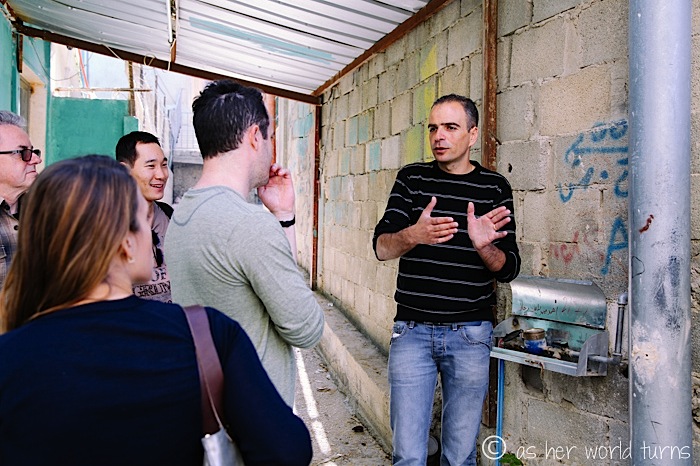
Later in the day we visit a glass factory in Hebron. There’s a ‘Glass-Blower Quarter’ that serves as a tourist attraction.
They use recycled glass to make products like jewelry, beads, lamps, and windows. At the factory we visit, they’re making glass cups and decorative plates. Here’s a few images:



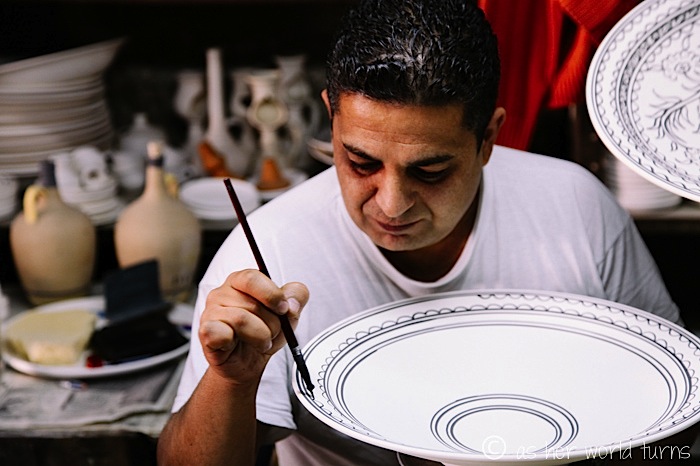
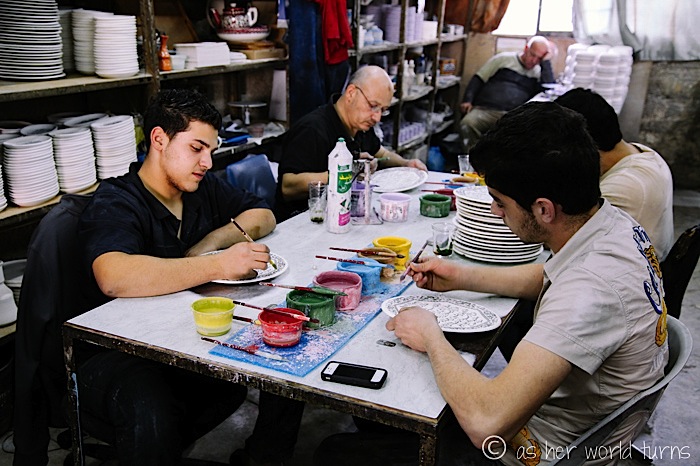


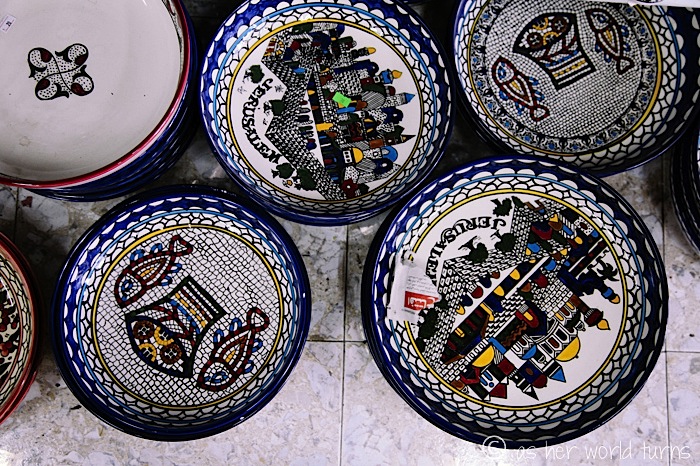
***I have one last picture to share, but it’s gory so consider skipping it if you have a weak stomach.***
There’s a butcher shop next door to this particular glass factory… with a camel carcass hanging in the window. A little girl stands nearby, sobbing, as she takes in the scene (not pictured).
…
…
…
… leaving space so you can really think about skipping it…
…
…
…
Okay, here it is.
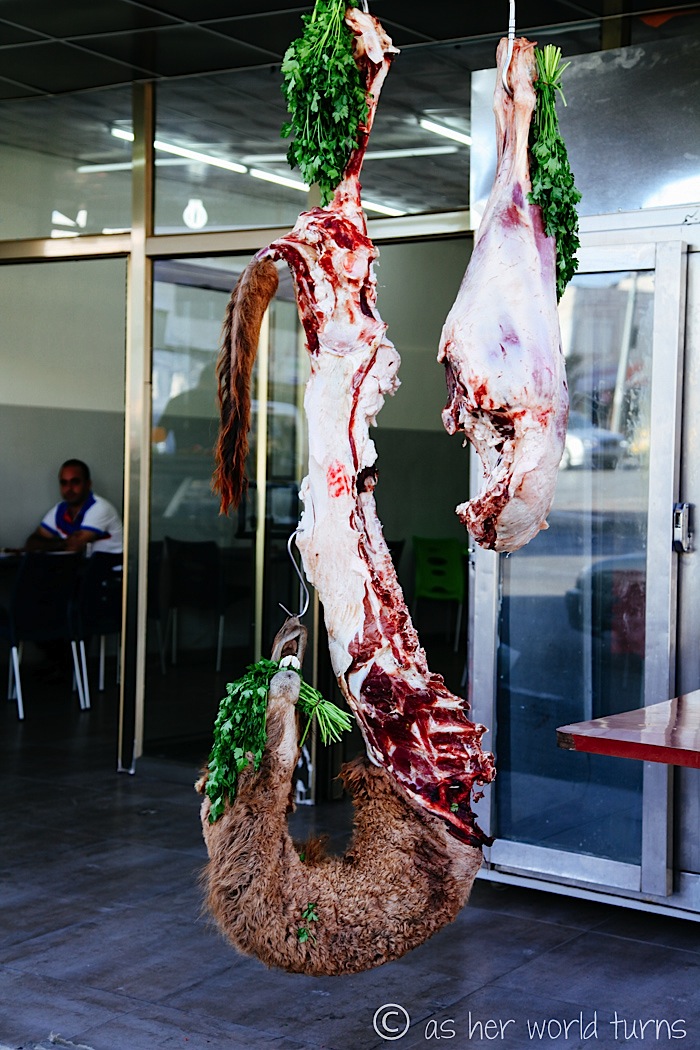
And to think, we started this post with a photo of a knock-off Starbucks store. What a collection of images this day has included.
My day-long tour of Bethlehem & Hebron was compelling and informative, and I’m so glad I’ve visited this area.
Many thanks to Green Olive Tours for generously hosting my day-trip to Bethlehem & Hebron. Opinions are my own.

